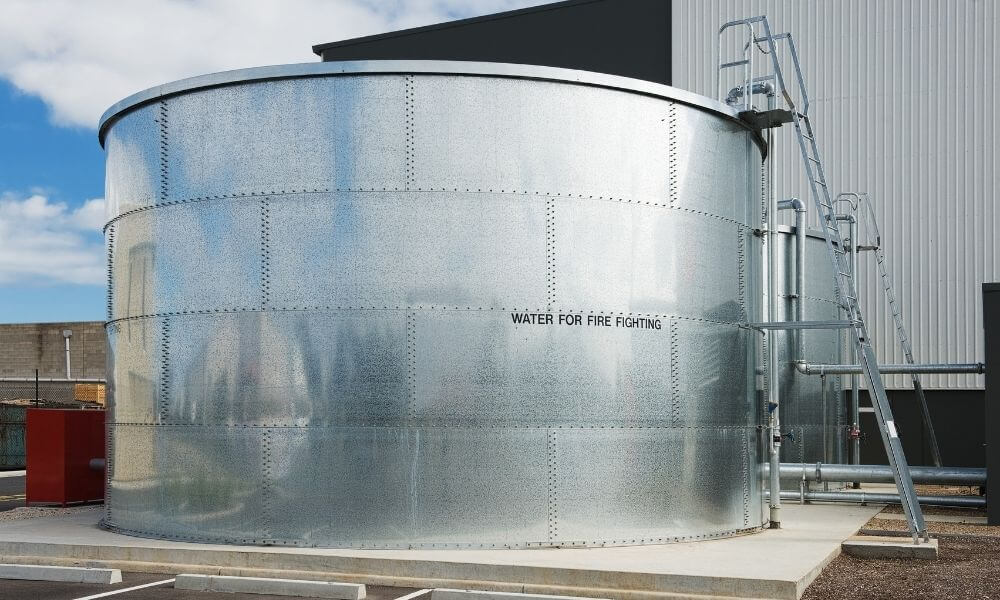
Have you really thought about the finest way of storing water? You’ve reached the right place if you have.
It’s possible that reservoirs aren’t as straightforward as you think. Definite kinds of storage tanks are better suitable for particular water sources. You should avoid storing drinking water in canisters that might contaminate it.
So, what kinds of water storage tanks are there, and what do they serve? Here’s some knowledge on ten of them.
Concrete Water tanks
Concrete tanks are the most primitive types of tanks that are great for water storage and can last you for several years. These prove to be highly effective and can be maintained easily as well just like your honeywell thermostats.
Fibreglass Tanks in the Ground
These buried vessels are constructed of fibreglass, a non-corrosive substance. They’re incredibly flexible, and it’s no shock that they’re widely used in a range of economic enterprises.
Once space is limited, submerged vessels are ideal. They enable large quantities of water to be saved while still leaving plenty of room above the floor for building structures or even other requirements.
Buried fibreglass tanks can store potable water, sewage, and other materials.
Tanks Made of Carbon Welded Steel
Water storage facilities made of carbon steel elements are severe and long-lasting, but they do not pose the risk of Lyme disease draining that cement does.
This barrel is adaptable in both renovation and use. Tanks are available in stainless or galvanized metal. You can also use them for fire prevention, water facilities, sewage treatment, and other purposes.
Pillows Tanks
Evaluate the pillow tanks if you’re looking for a tank that can do it all. They retain a lot more water, but they’re also portable! They could have an amusing name, but they do a good job.
There are numerous advantages to the use of a pillow tank. These vessels are far less costly than others, can retain drinkable or sewage, are simple to install not as simple as getting on kickass torrent, and are configurable.
Bolted Steel Tanks
These vessels are not for the fainthearted. They can retain a massive quantity of water. While some vessels would not be used to grab 150,000 gallons, that is exactly where these ponds begin.
Do you require the storage of a few million gallons of water? That won’t be an issue with these storage tanks.
Steel Roughened Tank
Corrugated steel tanks are a long-lasting option. If you wouldn’t want to use cement, these are viable options.
The above sort of tank is available in a wide range of sizes, from a few hundred gallons to a couple million. They could also be used for almost everything. They are frequently used for drinkable water, disposal, agriculture, and stormwater.
Fibreglass Above-Ground Storage Tanks
The above vessels are in the midpoint of the price bracket of a few of the vehicles we’ve discussed here. They may still not hold millions of gallons, and they’re doing the job perfectly.
Caustic water is stored in above-ground fibreglass reservoirs. This contains the space of refuse, potable water, and rainwater.
These vessels are also useful for storing solvents other than water.
Tanks that fold
Folding tanks are yet another alternative for portable storing water. These vessels are simple to erect and dismantle, making them ideal for regions where water surplus is scarce.
The benefit of these reservoirs is that they can be easily transmitted to almost any location. This is due to the fact that they crumble to a much compact footprint. As a result, they are useful on distant farmlands and in fighting fires.
Water Storage Tanks Made of Stainless Steel
Stainless steel is just another versatile option for water storage. However, they are not only used for water. Stainless steel is an excellent canister for everything from viticulture to brewpubs to the milk and cocoa sectors.
Because of the reassuring corrosion resistance material, it could be used for whichever your necessities are, which include drinkable purposes.
Vertical tank of storage
In a broad sense, small size water tanks use horizontal tanks, while large-scale storage tanks use vertical reservoirs. Because the water level throughout most vertical reservoirs is greater, the pressure gradient of the liquid column cannot be ignored in many instances. Vertical storage facilities cover specific places than horizontal reservoirs, but they must also account for wind forces and pressure gradient during the design stage.
FINAL THOUGHTS
Above are the different types of water storage tanks that one can utilize according to their needs.
Thomas Bennett
Related posts
Stay connected
- How LoveOn Chat Is Becoming the Most Versatile AI Companion for Digital UsersThe internet keeps shifting toward hyper-personal interaction, and AI companions are at the center of this shift. What used to be simple chatbots are now evolving into emotionally aware, adaptive, and multi-functional digital partners. Among the new generation of platforms, LoveOn Chat is becoming one... The post How LoveOn Chat Is Becoming the Most Versatile […]
